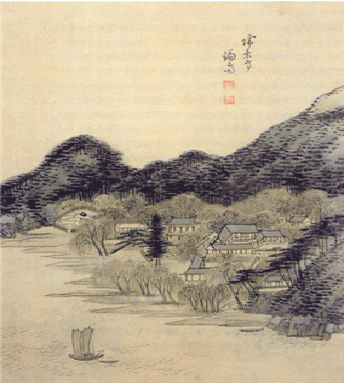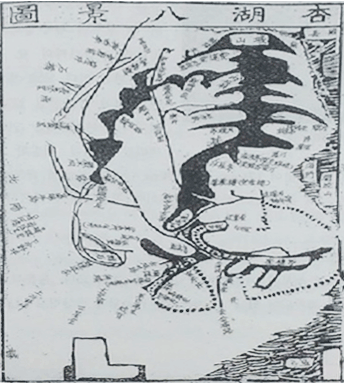Cultural heritage in Goyang
five-thousand years history
Current story of Goyang
Of many rivers in Korea, Han River is the representative river of our country. Han River is historically one of the most important rivers on the Korean peninsula and has long been a military and economic hub. In the Joseon Dynasty, Hanyang became the capital city and played a key role in both political and commercial aspects. However, Han River is not meaningful merely at a political, economic or military point of view. It also has become a foundation for a rich life for people. In Han River basin, various cultures and relics had been spread, such as Pungnaptoseong Fortress, Achasanseong Fortress, Haengjusanseong Fortress, Mt. Myeokjeol remains, Bukhansan and Bukhansanseong Fortress.
It is the only place of Han River Estuary that forms the willow community, and reed communities and tidal flats are also famous places. As the name ‘Janghang(Norumok)‘ depicts, it is also the largest habitat for roe deers in Korea, and the wintering spot for winter migratory birds such as white-naped cranes, big geese and mallards.
This area is a military reserve and general public is not allowed to enter, but only upon military approval. It is a ‘wild animal paradise‘ with the largest number of animals and plants in the Han River estuary. Currently, Goyang city provides ecological experience programs so visiting is possible after reservation.
As such, Han River does not have military or political significance as before, but still plays a big role in providing a comfortable shelter for both people and nature and maintaining and protecting the natural ecosystem. A closer look at the history and significance of Han River shows not only its geopolitical significance but also how the areas around Han River have historically developed and declined. Historically, in almost every country, there is a common point that waterways have first developed rather than overland roads, and the Korean peninsula was the same. For sure, Han River was both historically and geographically the center of logistics in Korean peninsula.
As such, Han River, served as the center of logistics, has developed a lot of Naruteo. A typical example is the ‘Haengjunaru‘, located in the northwest of Haengjusanseong Fortress. Haengju, in Koryo Dynasty, meant ‘a village with many apricot trees‘, but later the meaning changed to ‘a village where the King visited by‘. Since ancient times, Haengju had been known as a good place to live: convenient in traffic, a large population, developed commercially, a beautiful scenery and abundant in materials. This was well described in the work of Gyeumjae Jeongseon, 「Haenghogwanuhdo」, who was one of the greatest painters of the Joseon Dynasty. ‘Haengho‘ meant the Han River flowing under the mountain of Haengju. Gyeumjae Jeongseon, who visited Haengjusanseong Fortress in 1741, fell into the beautiful scenery and left it in a painting.
As said before, the historical significance of Han River had changed in times, and so did Haengjunaru. In the period of the Three States, Han River was a key to trade and transportation, which two kingdoms had fights to win it. Later, in Joseon Dynasty, it became a center of transportation and commerce as being the ultimate supply base for transporting goods to Hanyang. As such, the Haengjunaru had played a very important role in history as being the major transportation venue, despite its small size. It was even a ‘Naru‘, smaller than a ‘Po‘, but had the central government office. However, as the railway network developed across the country and continued to a rapid urbanization in the 1970s and opening of Haengju Bridge, Haengjunaru had become gradually declined.

Gyeumjae Jungsun‘s Guiraejeong

Haenghopalgyeongdo
It is a park recreated as the old form of Haengju village over 300 years ago, based on the Gyeumjae Jeongseon's 「Haenghogwanuhdo」. It kept the willow‘s native habitat and planted various apricot trees to represent Haengju. It was especially famous for its view from the Eight Scenic Views.
It is said that Han River was the entertaining and cultural center of the Joseon writers and that there were many arbors (palaces, pavilions) and buildings (villas). Especially in the early Joseon Dynasty, there are records of many anchors and villas, in Dongho (now northern of Donghodaegyo Bridge in Seongdong-gu), Yongho (now Yongsan River area) and Seoho (near Mapo, Seogang and Yanghwa Island). However, since the Japanese invasion of Korea, most of them have been ruined or disappeared, and 22 new villas were opened. Han River and Haengju city have such a long and tough history of Korean Peninsula. They once flourished and the other times declined, but we hope that Han River and Haengju will continue to have a beautiful and wonderful culture forever.
Why is there a lot of eel houses in Haengjunaru?
Originally, during the Joseon Dynasty, there was ‘Woonguh‘ among Haengju‘s special products. Woonguh is famous for having a Chinese letter ‘king‘ on its head, and the Woonguh of the Haengju was especially good in quality and was a genuine product for the King. There was even ‘Weeuhso‘, an attached government agency that managed and selected genuine Woonguh. Even the fishermen who have provided Woonguh to the King had exempted taxes and ministries. However, since the early 1970s, fishing Woonguh had greatly reduced as they weren‘t treated as valuable as before. At this time, most of the restaurants selling Woonguh changed to Eel restaurants. As a result, there are more houses selling eel in Haengju.
What if you want to enjoy good food?
There are two Dongs in Haengju area, Haengju Outer-dong and Inner-dong. Among them, the outer-dong is famous for eel village and inner-dang for noodle village. Moreover, around Haengjunaru, food culture has developed with many markets like food village, fish shops and rice markets. There also are more than 110 restaurants and 30 cafes in two Dongs, so anyone can enjoy and satisfy the foods here.